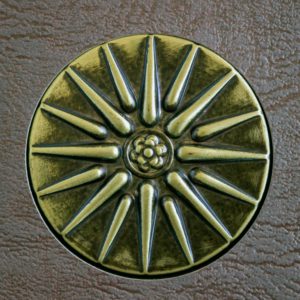Archaeological Museum of Thessaloniki
The history of the Archaeological Museum of Thessaloniki is an integral part of the city’s modern history. The first archaeological service in Thessaloniki was established in November 1912, just fifteen days after the city was liberated and incorporated into the Greek state.
Before 1925, antiquities from Macedonia were collected and stored in the Management Building (current Ministry of Macedonia and Thrace) and in the building that now houses one of the faculties of the Aristotle University. During World War I, findings from the French Army of the East were gathered in the Rotunda, and the results of the excavations by British forces were stored in the White Tower.
In 1925, the Yeni Mosque, the “newest mosque,” a mosque for Islamized Jews, was transferred to the Archaeological Service. The Yeni Mosque became the first museum in the city, as evidenced by the inscription on its facade. In 1940, many antiquities, mostly sculptures, were buried, helping to preserve them from occupation forces. The artifacts were excavated in 1951 and first exhibited in the main hall of the Archaeological Museum (Yeni Mosque) in 1953.
In 1950, a large plot of land in the central part of Thessaloniki, near the HELEXPO international exhibition center, was allocated to the archaeological service. The development of the project for the new museum was entrusted to the eminent Greek architect Patroklos Karantinos, a leading representative of the modernist movement of the time.
The new museum was inaugurated in 1962, celebrating the fiftieth anniversary of Thessaloniki’s liberation. The first exhibition included impressive finds from the Derveni tombs, which were discovered in the same year.
Professor Manolis Andronikos’s findings from the royal tombs excavations at Vergina, transferred to the museum immediately after their discovery, necessitated an extension of the new “wing.” Another space was created underneath it, where in 1996, the first exhibition dedicated to the history of Ancient Macedonia was held.
From 2001 to 2006, the museum underwent reorganizational efforts, expanding the exhibition space to its maximum and organizing thematic exhibitions in a new format.
The museum’s exhibition is currently divided into eight sections:
1. Prehistoric Macedonia
2. On the Genesis of Cities
3. Macedonia from the 7th century BCE to Late Antiquity
4. Thessaloniki – Megapolis of Macedonia
5. Gold of the Macedonians
6. House, Garden, Daily Life
7. Memory and Stones
8. Macedonia: From Mosaic Floors to Pixels.
Opening hours: Daily from 08:00 to 20:00 (closed on Mondays)
T. 2313 310301
https://www.amth.gr/





